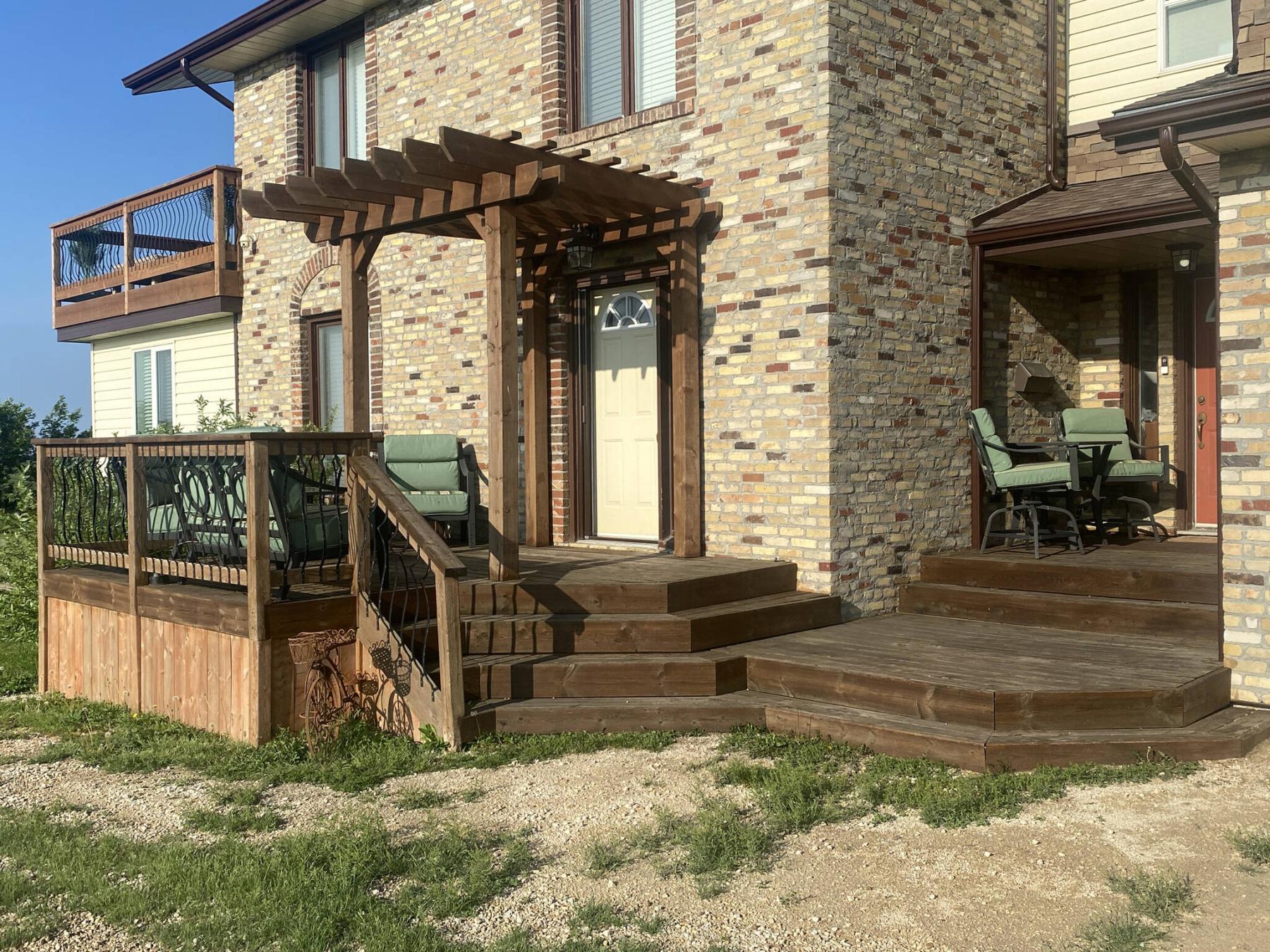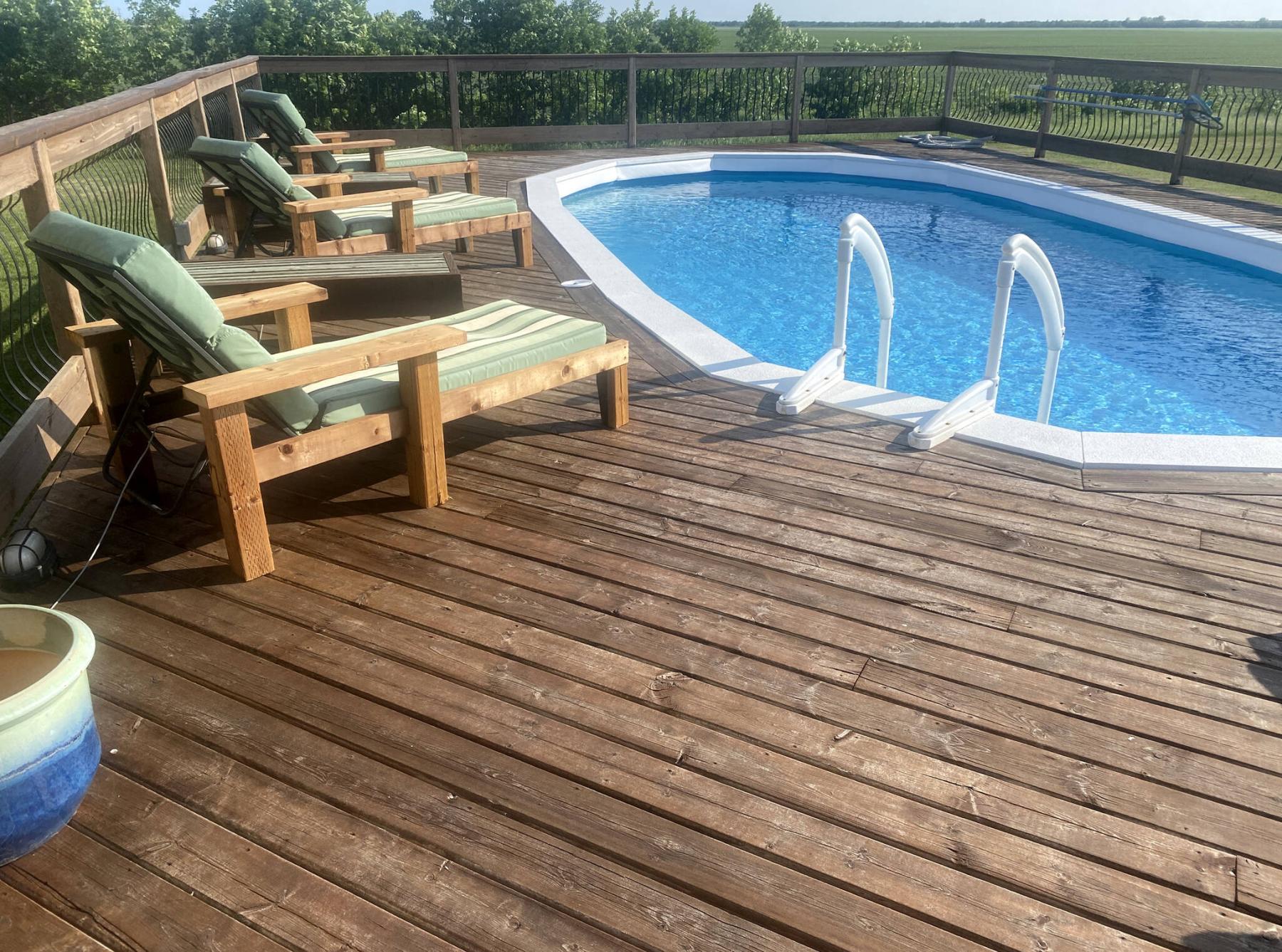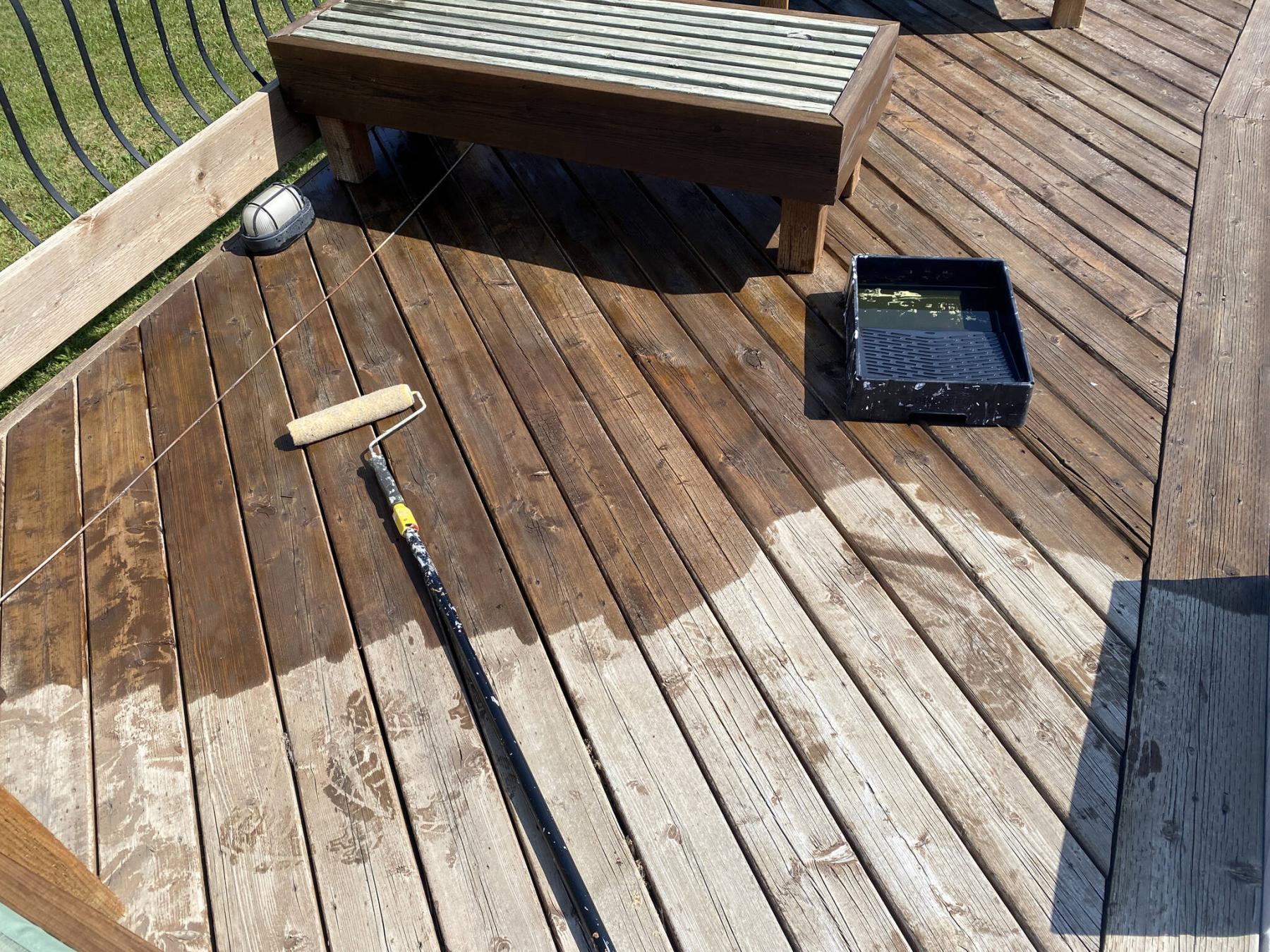
The front porch celebrates its 20th anniversary this fall, and the oil makes it appear brand new.

The canola oil brings out the true colour of the old lumber that had been concealed just below the grey-faded surface.
A few years ago (nearly six to be accurate), a Reno Boss column featured the process of re-“staining” the front and back decks on my property. The product used was a deep-penetrating oil by Behr, that boasts better coverage than a typical stain because it soaks into the lumber decking. And for five years, the colour held up fairly well. This past spring however, it was evident the decks were due for another “stain” attempt.
I use the word “attempt” because I’ve always held the belief that in this climate, it is extremely difficult to expect the topical stain to weather more than a couple winters without beginning to flake and peel. As such, it has become my policy regarding deck to “only build’em, never stain’em”. Should a client seek my advice on how best to revitalize a treated deck, my guidance mandates that the lumber be bleached nearly grey, which would indicate that the “treatment” of the treated lumber has all but faded away. Fundamentally, a treated lumber deck (in my opinion) should never be stained until the wood has become grey — by nature of the treatment process, treated lumber has been virtually sealed to lengthen the lifespan of the lumber by disallowing the over-absorption of moisture. As such, “staining” a treated deck is a topical process, and almost surely guarantees the stain will eventually flake and peel, because it cannot be absorbed properly by the lumber.
When MY decks were tackled, the lumber was grey-white from having been battered by the sun through the years. On a dry morning, before the sun was too elevated in the sky, the decking was given a coat of chocolate brown tinted deep-penetrating oil. Carefully applying the coat to avoid any roller stroke overlaps (that would appear darker) before an area could fully dry, the process took roughly 24 hours total, and just under 18 gallons of Behr product. The results were impressive, and it appeared that the oil had been absorbed by the faded lumber. As mentioned, the colour withstood several winters and only recently began to lose its colouring.
The prospect of redoing all the decks again in the same manner was daunting, to say the least; moving all the patio furniture, waiting for the perfect dry morning, not to mention the cost of 18 gallons of Behr product. Nonetheless, something needed to be done. A thought crossed my mind to perform a little experiment on a small area of decking, before running out to buy new stain — and it may be somewhat controversial to some, so I’ll state for the record right now that I do not guarantee the results for anyone else should they wish to try what I’m about to reveal, but it certainly worked for me.
Along a small patch of decking near my back patio door, a small dab of canola oil was spread. As though water had been spilled (which always highlights the original brown of the lumber, the “wet look”), the Canola oil also (and immediately) brought out the true colour of the lumber prior to having faded in the sun. A week later, that darker patch remained despite a few rainy days and moreover, allowed the water from rainfall to bead atop the deck surface in that area. At that moment, the canola oil deck experiment was born. The next day, three five-gallon pails of canola oil was purchased at Costco, and the process would begin that weekend.
Fortunately, the weather cooperated nicely. The days leading up to the weekend were dry and hot. And the morning I began “oiling” the decks, the wind was subtle, and the skies were clear. The front porch was completed first. In real time, I was able to witness the old, faded lumber truly absorb the oil, drawing out the beautiful wood-tones concealed below the grey-faded surface. Moreover, because the oil is clear (and canola oil doesn’t really ever “dry”), the prospect of overlapping roller strokes was no longer an issue. The front porch was fully oiled in less than an hour.
The following day, with Mother Nature again on my side, the back decks were tackled. Rather than moving all the patio furniture, tables, and BBQ off the decks, they were simply moved slightly to reveal enough of the decking surface for the ensuing oiling process. After another three hours, both tiers of the rear deck and around the pool had been completed. In that the sun had not faded the railings to the same degree, only the railing caps were oiled to match the top decking. When it was all said and done, only nine gallons of canola oil were used to revitalize my decks.
There is no doubt the canola oil will protect the wood, and despite having been thoroughly absorbed by the old lumber, the oil has also shown to repel water — it simply beads and rolls off the boards. My front porch is now nearing its 20th year, and the rear decks will be 14 years old this fall. Although I am extremely satisfied with the “wet look” provided by the canola oil experiment, my excitement lies with the prospect of having once again extended the life of these decks, that have provided us with so many good memories. Although it is yet to be seen how well this process will endure the winter seasons, having to repeat the process again at some point, now seems less daunting for some reason — it was almost fun to do!
Please be reminded that this canola oiling process was an experiment achieved on my own property — it should be acknowledged that I do not in any way advocate attempting this on your own decks, as results will vary depending on the condition of the lumber. And although it may seem extremely unconventional, the results on my decks are undeniable, and rather exciting. I simply wanted to share these amazing results with my readers.
RenoBoss.Inc@outlook.com




